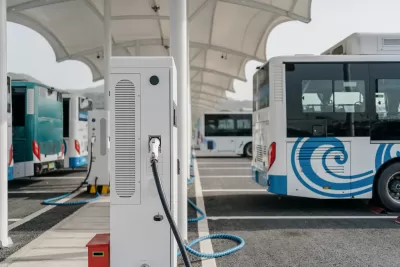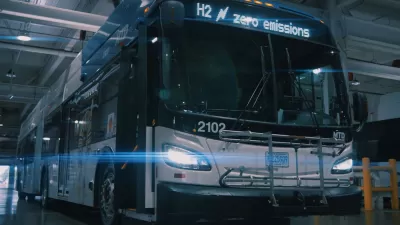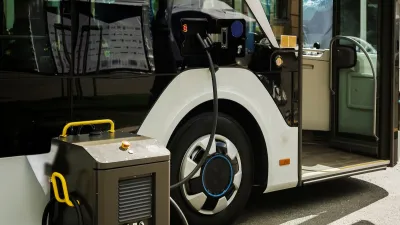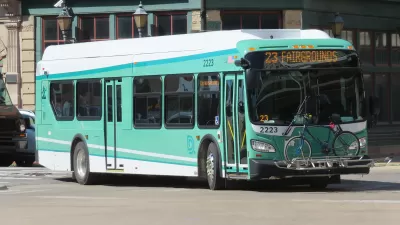Two programs designed to help transit agencies shift to electric and zero-emission fleets contain rules that could slow the adoption of zero-emission vehicles.

An analysis by Transportation for America finds that certain provisions of the federal Low or No Emission Vehicle (Low No) and Bus and Bus Facilities programs limit their effectiveness and “artificially constraining the supply of zero-emission funds, locking in unnecessary transit emissions for decades.”
Based on information obtained by T4A through a Freedom of Information Act (FOIA) request, T4A concludes that “the [Low No] program encourages transit agencies to buy diesel hybrid and compressed natural gas (CNG) buses instead of zero-emission buses running on electricity or hydrogen,” with 25 percent of the Low No program’s funding aimed at low-emission, not zero-emission, vehicles and projects.
While “The Bus and Bus Facilities program does not place constraints on fuel types when considering awards,” T4A found that “zero-emission projects had a one in six chance of being awarded while consuming 83 percent of the program’s available funding.”
According to T4A, “Congress can do more to ensure that these programs are working to accomplish emission reduction goals” by increasing funding for both programs to meet the overall demand for buses and facilities; creating incentives for both programs to leverage other funding sources; and increasing transparency of the program by making basic application and award information available on FTA’s website and looking for ways to simplify the application process.”
FULL STORY: Greener Fleets: How federal dollars can supply the demand for clean transit

Maui's Vacation Rental Debate Turns Ugly
Verbal attacks, misinformation campaigns and fistfights plague a high-stakes debate to convert thousands of vacation rentals into long-term housing.

Planetizen Federal Action Tracker
A weekly monitor of how Trump’s orders and actions are impacting planners and planning in America.

San Francisco Suspends Traffic Calming Amidst Record Deaths
Citing “a challenging fiscal landscape,” the city will cease the program on the heels of 42 traffic deaths, including 24 pedestrians.

Adaptive Reuse Will Create Housing in a Suburban Texas Strip Mall
A developer is reimagining a strip mall property as a mixed-use complex with housing and retail.

Study: Anti-Homelessness Laws Don’t Work
Research shows that punitive measures that criminalized unhoused people don’t help reduce homelessness.

In U.S., Urban Gondolas Face Uphill Battle
Cities in Latin America and Europe have embraced aerial transitways — AKA gondolas — as sustainable, convenient urban transport, especially in tricky geographies. American cities have yet to catch up.
Urban Design for Planners 1: Software Tools
This six-course series explores essential urban design concepts using open source software and equips planners with the tools they need to participate fully in the urban design process.
Planning for Universal Design
Learn the tools for implementing Universal Design in planning regulations.
Heyer Gruel & Associates PA
JM Goldson LLC
Custer County Colorado
City of Camden Redevelopment Agency
City of Astoria
Transportation Research & Education Center (TREC) at Portland State University
Jefferson Parish Government
Camden Redevelopment Agency
City of Claremont





























